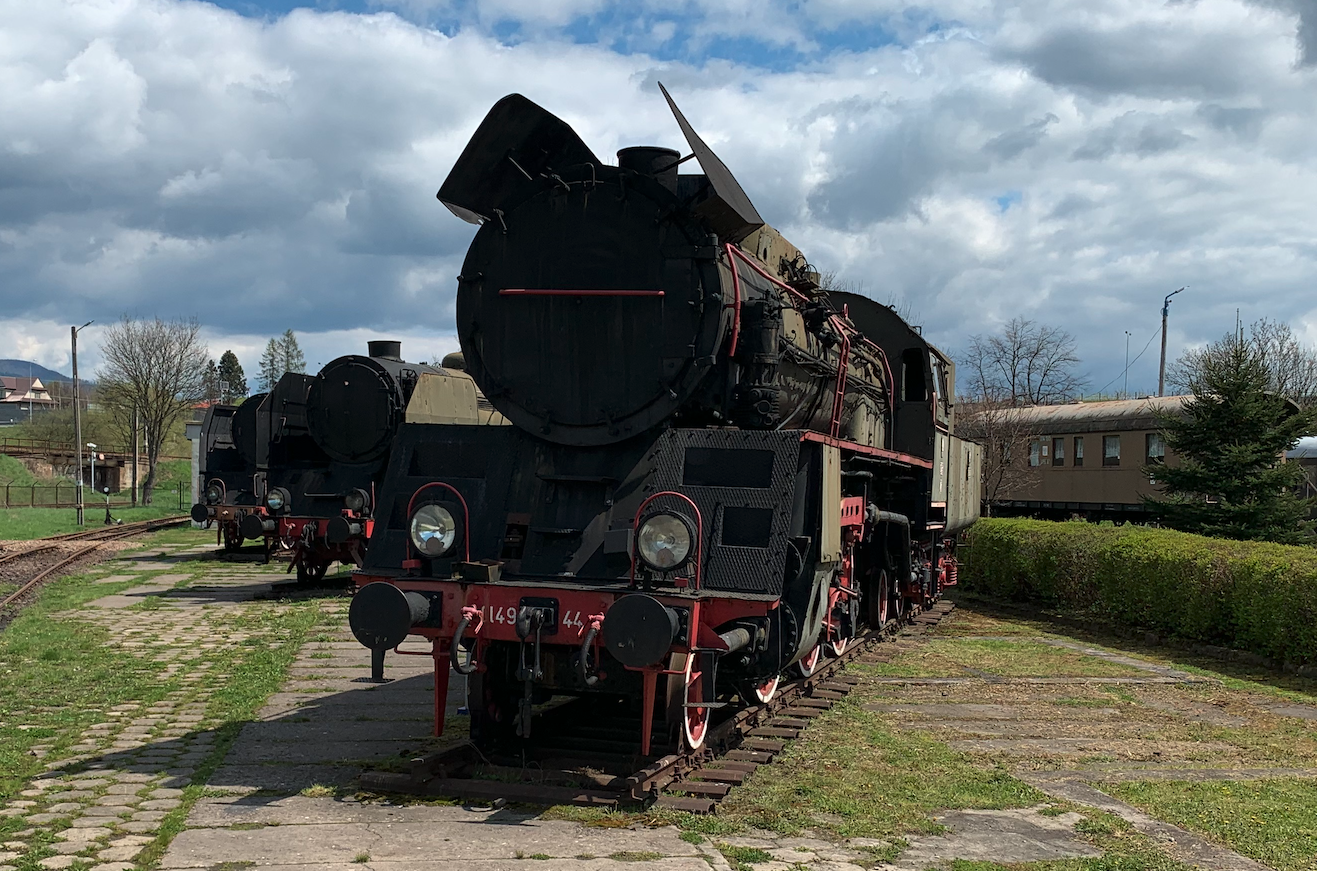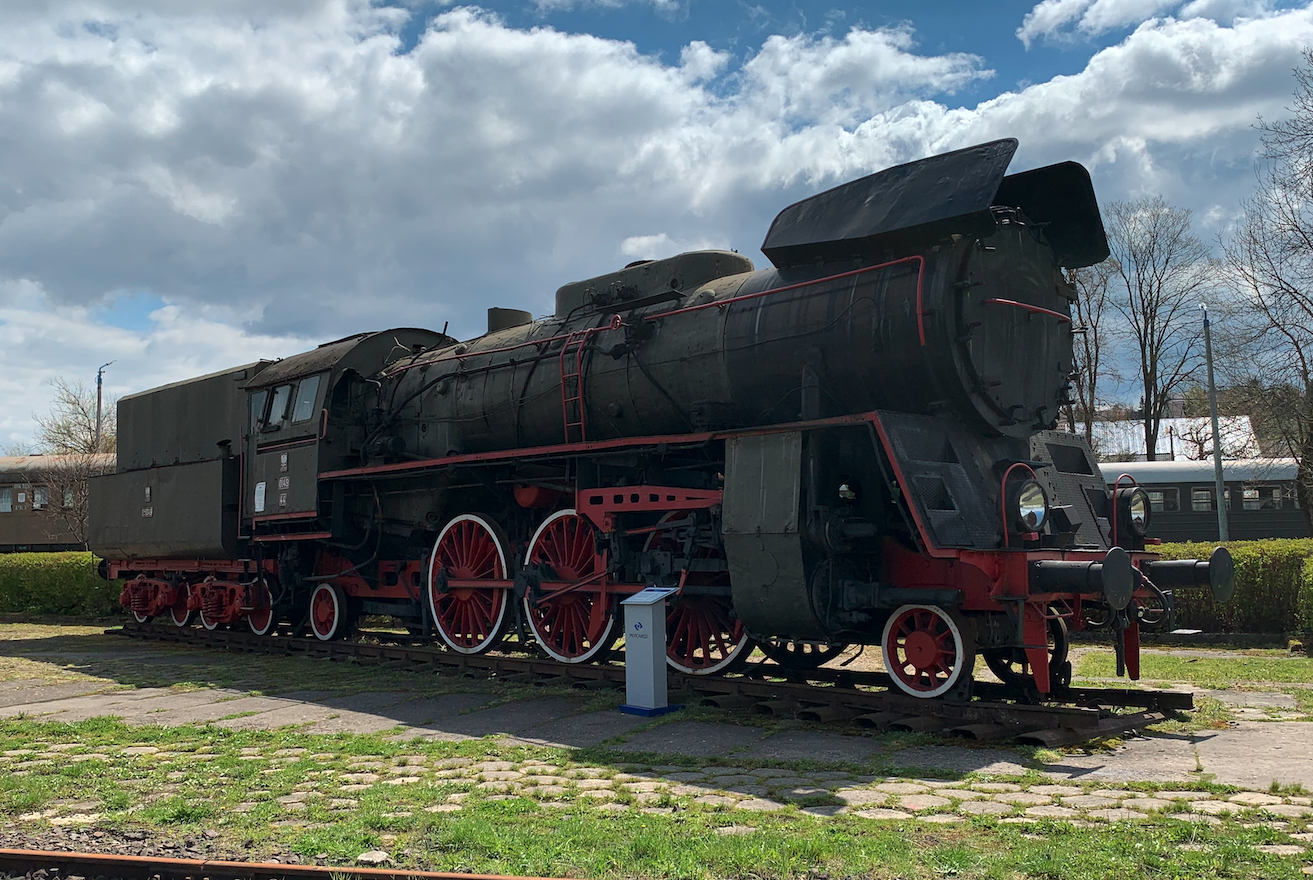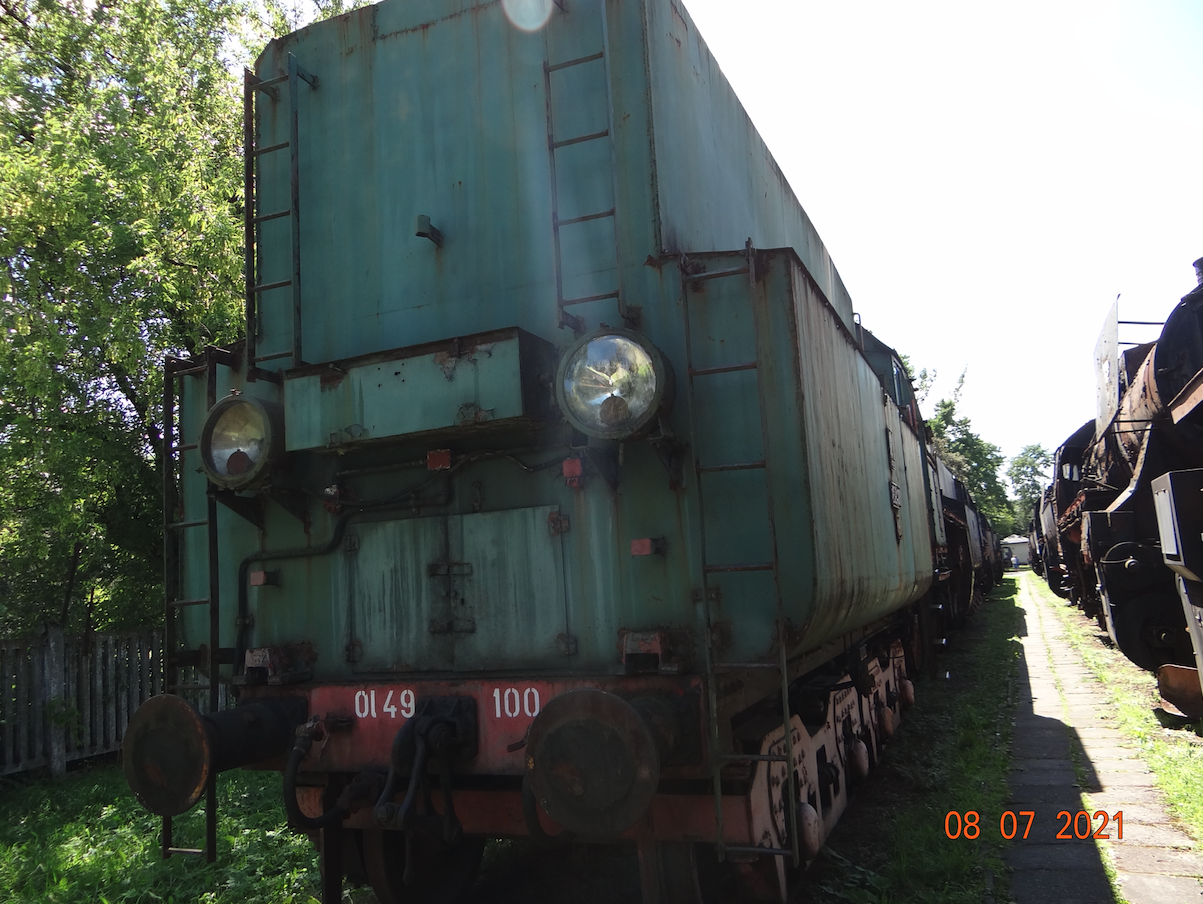Chabówka 2021-12-30
Steam locomotive series Ol49.
The Ol49 series locomotive is a passenger steam locomotive with the "l" axis system, i.e. 1C1 (otherwise oOOOo). The Ol49 locomotive was developed by Polish designers in 1949. The production was started in the FABLOK factory in Chrzanów. 116 locomotives were built.




After the Second World War, almost all rail passenger traffic was based on steam-driven trains. At the end of 40 years, it became necessary to modernize the rolling stock that was used for long-distance trains, including fast trains. Ok1 and Ok22 steam locomotives (from the period 1907-1923) were suitable for light suburban trains and for local lines. However, they were insufficient for long-distance trains, which were necessarily operated by freight locomotives.
That is why work on a steam locomotive with the PKP designation Ol49 series began. The serial production of OL49 locomotives was commissioned to the FABLOK plant in Chrzanów, which was then named after Feliks Dzerzhinsky (Bolshevik, creator of the Soviet terror apparatus, head of the Cheka and GPU). In the period 1951 - 1955, 112 Ol49 locomotives were produced for PKP. Additionally, 4 copies were built for North Korea.
Polish constructors used their experience in designing and operating locomotives of the Pt47, Ty45 and Ty246 series. The design of the locomotive greatly facilitated the work of the locomotive team. Nevertheless, during the operation, some components were modified. The boiler water supply injector has been changed. The arrangement of some caps has been changed. New headlights were installed and their placement changed, adding a third headlight on the locomotive's forehead (not all examples). A ploughshare scraper has been added under the locomotive's headstock. In order to simplify production and renovation, the convex dynamo door has been replaced with flat doors. From 1961, the SHP (Automatic Train Braking) device was installed in the Ol49 locomotives. The chassis of the tenders, in which rolling bearings were installed, or new bogies of the 2XT type, which were used in freight cars, were modified.
During operation, the locomotives were not painted green. Entire locomotives were painted black. In many cases, the locomotive staff painted the locomotives at their discretion (the availability of paints): wheels, trusses, refuges, etc. Ol49 locomotives entered service in all branches of DOKP. Steam locomotives were drawn to long-distance, fast and sometimes local trains. Most of the Ol49 locomotives were decommissioned in the early 1990s. Until 2010, about 40 Ol49 locomotives were preserved. Most of them are non-ride-able, non-serviceable exhibits. Nevertheless, many of them can be brought back into service. In 2019, two Ol49 locomotives were in operation at the Wolsztyn depot.
The steam locomotive Ol49 compared to the steam locomotives Ok1 and Ok22 accelerated slower. However, she could drive trains weighing up to 300 tons at a speed of 100 km / h. Trains weighing 900 tons, the Ol49 steam locomotive ran at speeds of up to 80 km / h. The Ol49 steam locomotive ran smoothly. When driving the tender forward, the maximum speed was 50 km / h. A large boiler required greater physical effort from the crew while pouring the coal onto the grate. A large supply of water and coal meant that the steam engine could travel up to 800 km. On the Kraków - Warsaw route, the steam locomotive consumed 4,800 - 6,200 kg of coal. It all depended on the quality of the coal and the driving style of the mechanic. In winter, the consumption of coal was greater because passenger carriages were heated.
Ol49-44 steam locomotive.
The steam locomotive Ol49-44 factory number 2989, after being manufactured in 1952 at the FABLOK plant in Chrzanów, was sent to work in the Kraków locomotive depot, where it operated from November 1952 to February 1958. The steam locomotive then worked in Tarnów, Jasło, Dębica, Trzebinia, Płaszów and Przeworsk. The locomotive led the trains on the routes of southern Poland. The steam locomotive ended its service in December 1990. In 1993, the Ol49-44 locomotive from Przeworsk was sent to the Chabówka open-air museum. On the routes, the locomotive was replaced with a diesel locomotive SP42. In 1996, the Ol49-44 locomotive was restored as a museum exhibit and positioned in the alley of steam locomotives.
Ol49-100 steam locomotive.
Ol49-100 factory number 3214, after production, it was sent to work in the Kłodzko depot. Then: Toruń, Żagań, Przeworsk. The steam locomotive ended its service in December 1990. In 1993, the Ol49-100 locomotive from Przeworsk was sent to the Chabówka open-air museum. On the routes, the locomotive was replaced with a diesel locomotive SP42. In 1994, the Ol49-100 locomotive was kept as an operational locomotive and until 2005, it was hauling commemorative trains. The steam locomotive has a tender from another steam locomotive; No. 25D49-19.
T-T data of the Ol49 steam locomotive:
Design speed 100 km / h. Service weight of 144,900 kg. The own weight of the locomotive is 75 100 kg. Service weight of the locomotive is 82 900 kg. Driving wheels diameter 1.75 m. Roller diameter 0.85 m. Length 20.70 m. Height 4.55 m. Axle arrangement 1C1. Heated area 162.90 m2. Grate area of 3.70 m2. Boiler pressure 16 atm. Axle load up to 17,400 kg. Schmidt type superheater. Heusinger timing gear.
Tender type 25D49 (25 m3 of water, D - four axles, Year of development 1949). Water supply 25 m3. 12,000 kg of coal stock. The tare weight of the tender is 25,000 kg. The service weight has a tendency of 62,000 kg.
Written by Karol Placha Hetman
